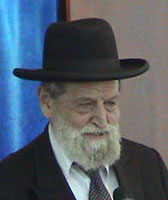Beit Midrash
- Sections
- Chemdat Yamim
- Parashat Hashavua
- Torah Portion and Tanach
- Bamidbar
- Beha'alotcha
In the recounting of the inauguration of the Mishkan (in Parashat Shemini), the Torah also describes the preparations for the Divine Presence to descend, which it finally did in the form of a fire that "devoured" the offerings. The people, seeing this as a sign of the arrival of the Divine Presence, bowed down in response (Vayikra 9:24). Another time when fire and a cloud were the sign of the Divine Presence was at the giving of the Torah at Har Sinai, as mentioned in Parashat Yitro (Shemot 19:18) and, at greater length, in Parashat Mishpatim (ibid. 24:15-18).
What is the connection between these external signs and the Divine Presence? Fire reminds us of sanctity and middat hadin (the attribute of strict justice). The cloud is always connected with an element of kavod – honor in a softer, more pleasant manner, and thus middat harachamim (the attribute of mercy).
The scholars of the more mystical truths of Torah explain the matter as follows. On one hand, Hashem is beyond human comprehension, and is distant from us. This is symbolized by middat hadin. On the other hand, He is close to us in that "there is no place that is without Him." This second element is symbolized by middat harachamim. The tension between these two ostensibly contradictory elements serves as the basis for generations of Jewish thought. We can describe two tracks of the expression of Hashem’s complex interaction with us. One is: strict justice, distance, fear, prohibition, intellect, and cold calculation. The other one is: mercy and compassion, closeness, love, permissibility, emotion, and warm relations.
May we merit Divine Revelation which combines the best of both elements.

Parashat Hashavua: Nitzavim in the Parasha and by Yam Suf
Rabbi Yossef Carmel | Tishrei 5786

The King’s Clothes
Rabbi Yossef Carmel | 5774

Parashat Hashavua: “All Creation Will Know” – part III
Rabbi Yossef Carmel | Av 5785






















